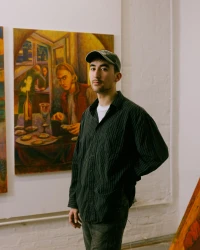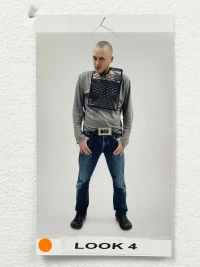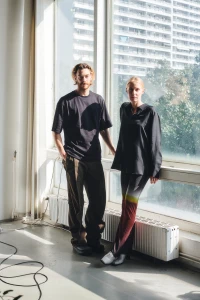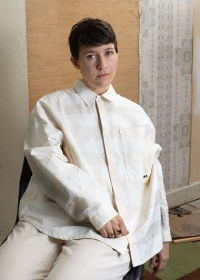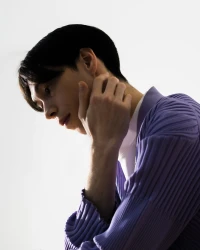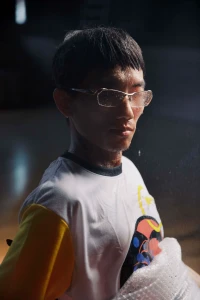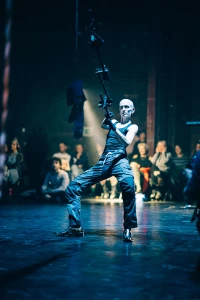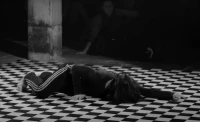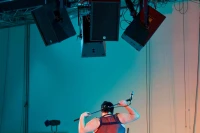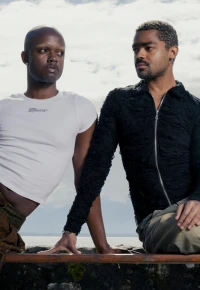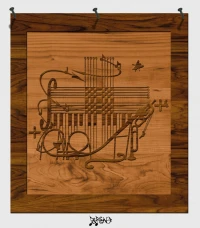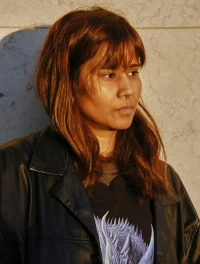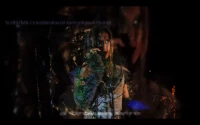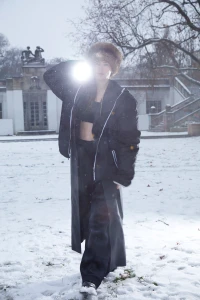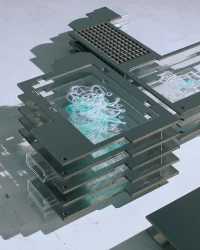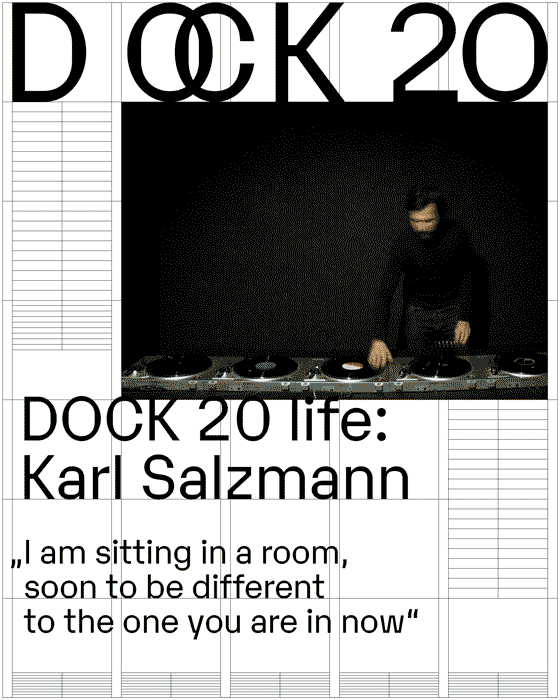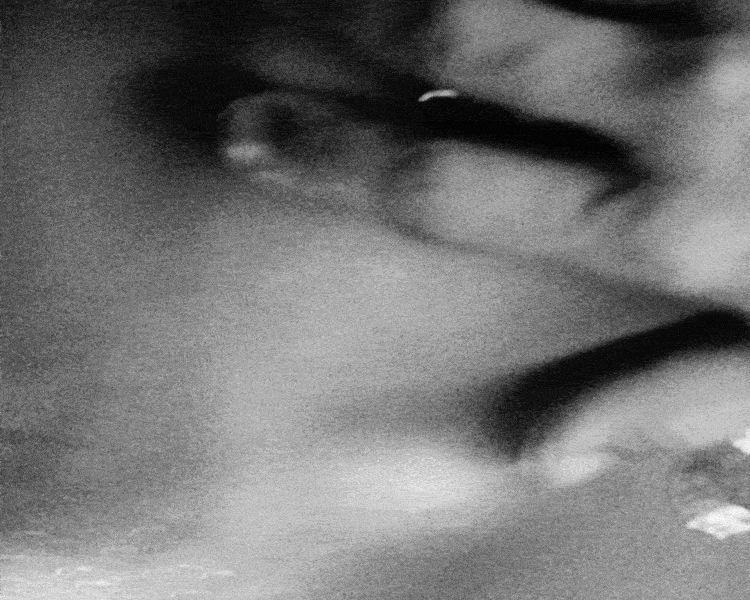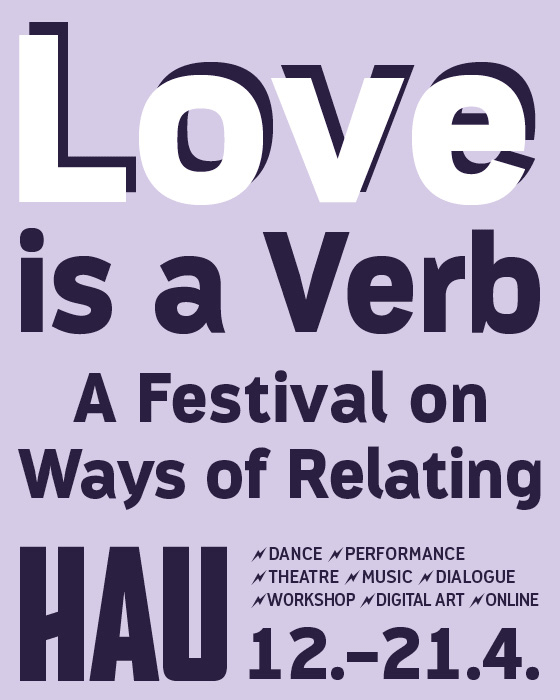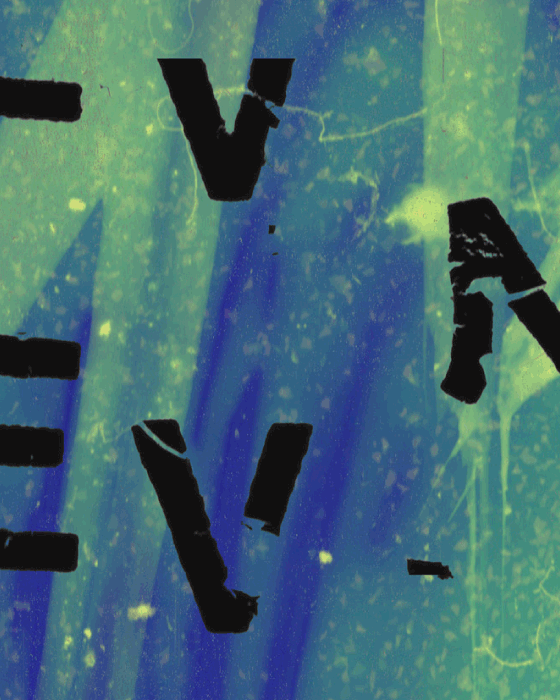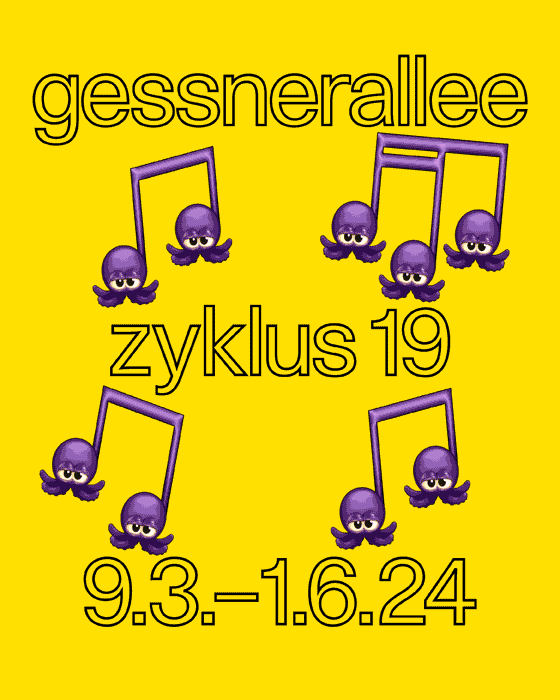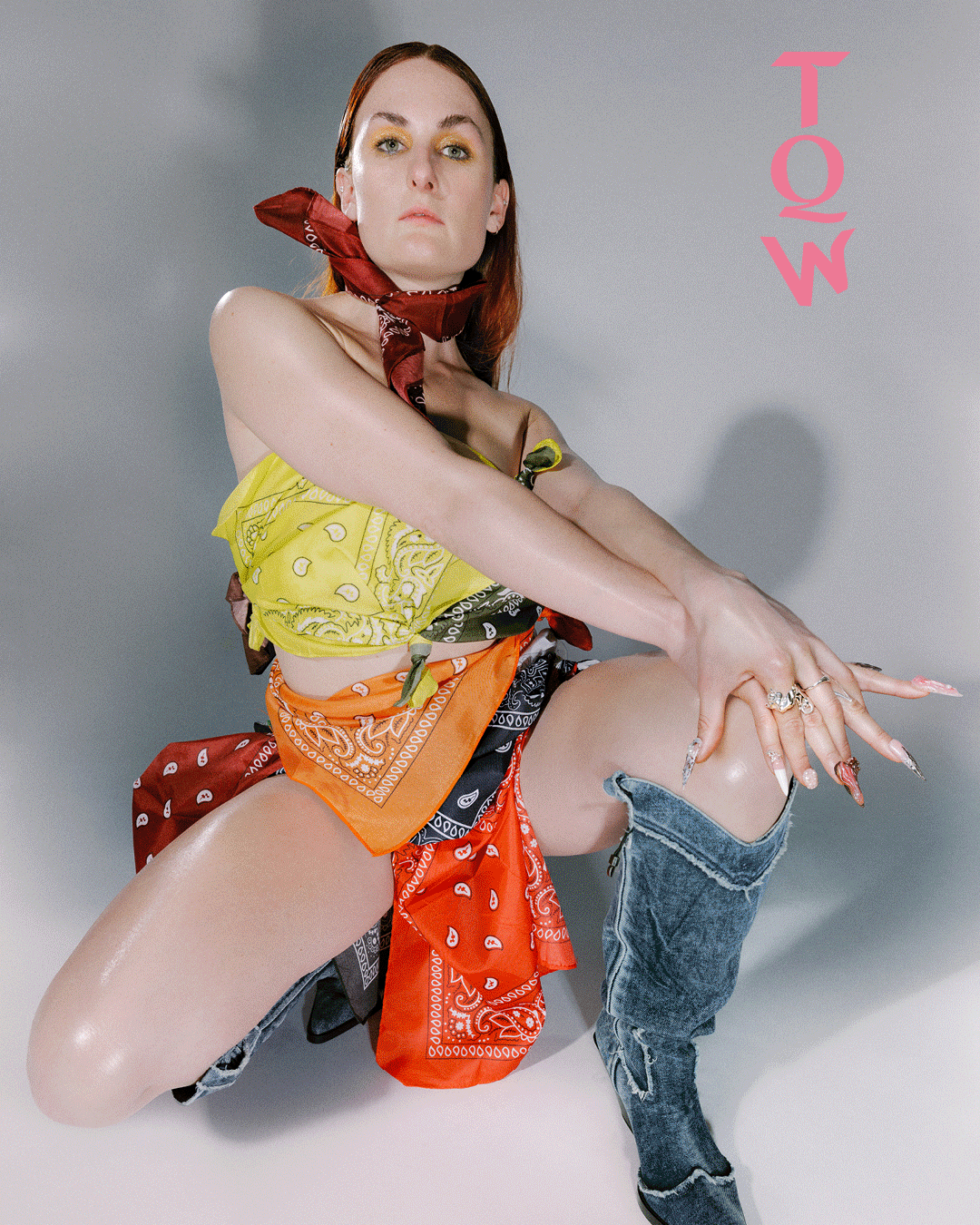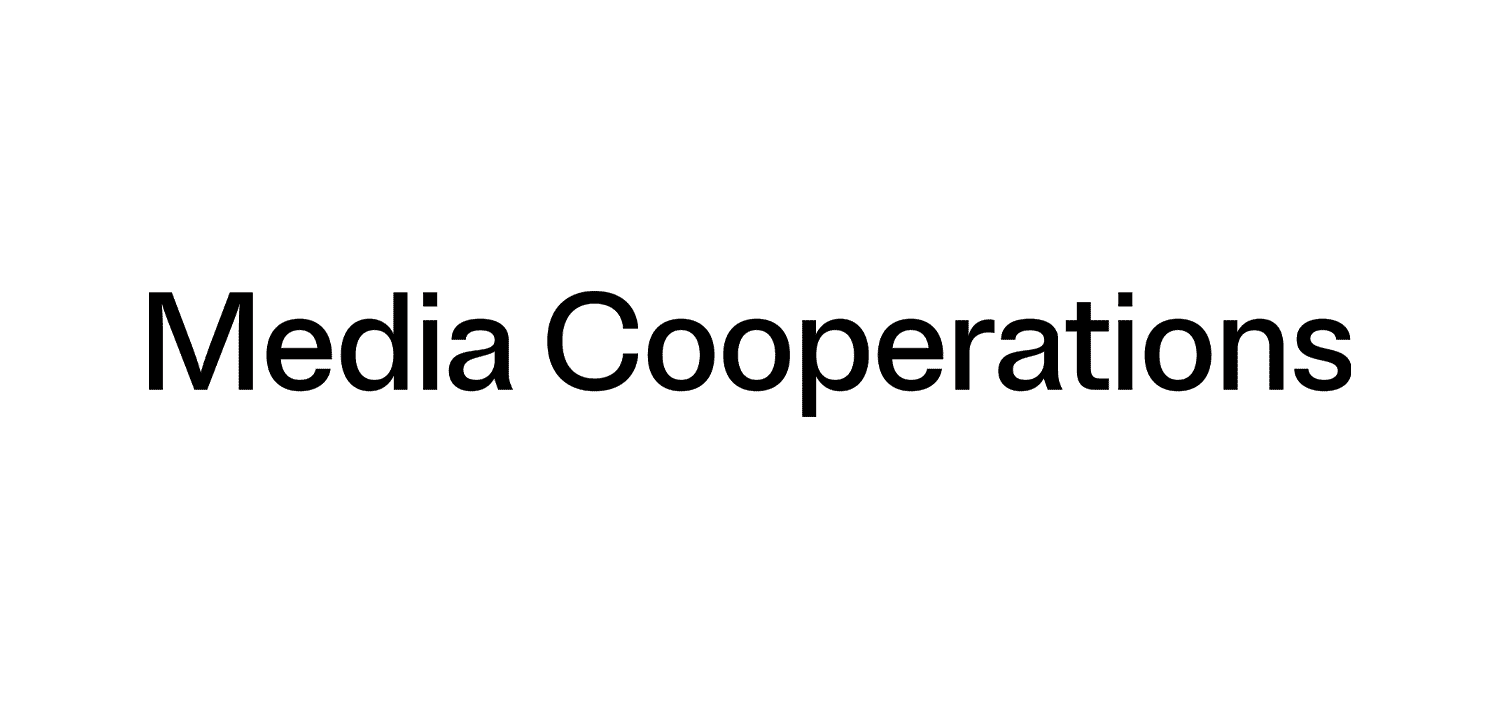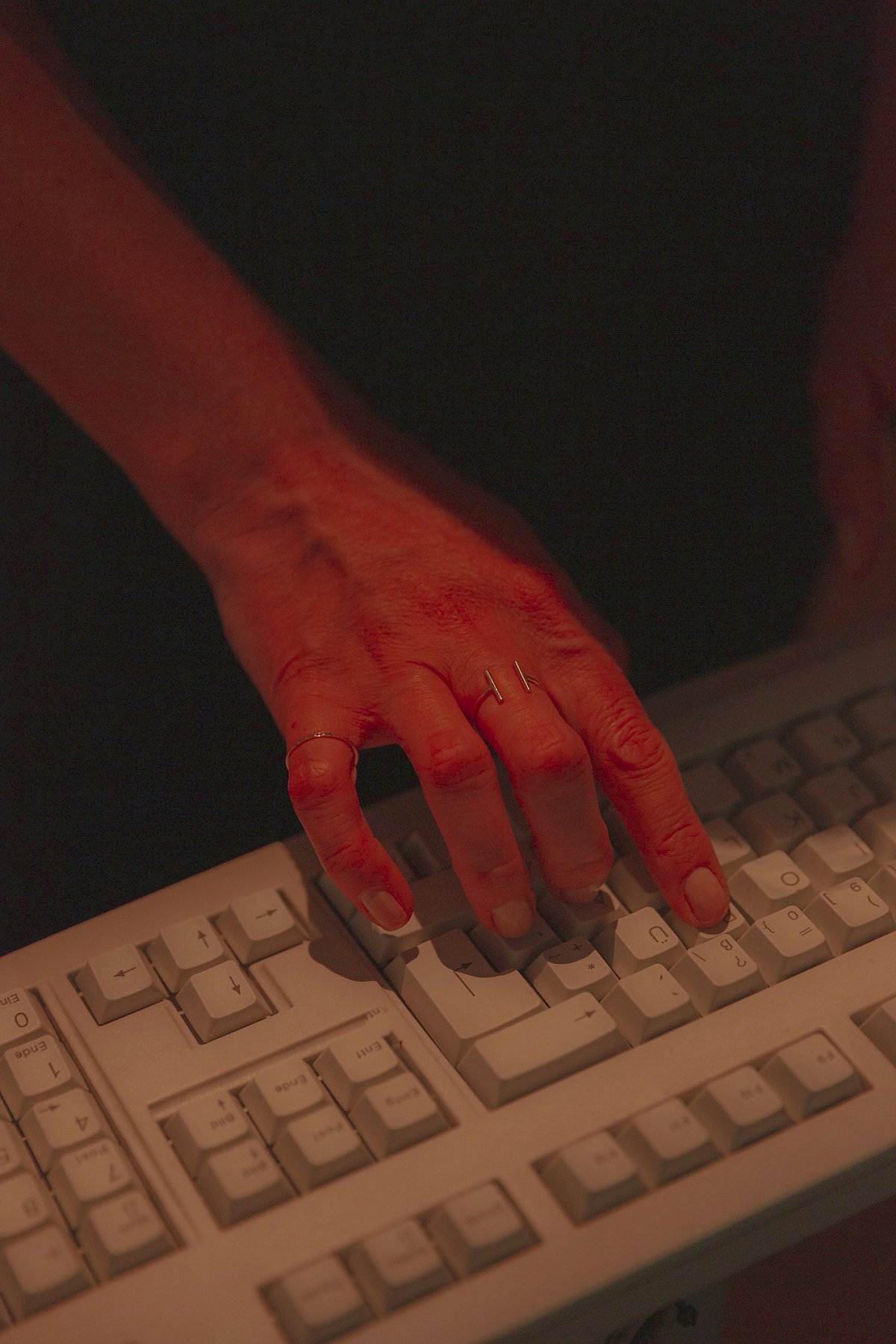1. Allgemeine Hinweise und Pflichtinformationen
Diese Datenschutzerklärung klärt Sie über die Art, den Umfang und Zweck der Verarbeitung von personenbezogenen Daten (nachfolgend kurz „Daten“) innerhalb unseres Onlineangebotes und der mit ihm verbundenen Webseiten, Funktionen und Inhalte sowie externen Onlinepräsenzen, wie z.B. unser Social Media Profile auf (nachfolgend gemeinsam bezeichnet als „Onlineangebot“). Im Hinblick auf die verwendeten Begrifflichkeiten, wie z.B. „Verarbeitung“ oder „Verantwortlicher“ verweisen wir auf die Definitionen im Art. 4 der Datenschutzgrundverordnung (DSGVO).
Verantwortlicher
Die verantwortliche Stelle für die Datenverarbeitung auf dieser Website ist:
PW-MAGAZINE, Kulturverein für unabhängige Kulturberichterstattung in Österreich
Theresiengasse 46/11
1180 Wien
Österreich
ZVR-Zahl: 1378622592
E-Mail: editorial@pw-magazine.com
Verantwortliche Stelle ist die natürliche oder juristische Person, die allein oder gemeinsam mit anderen über die Zwecke und Mittel der Verarbeitung von personenbezogenen Daten (z.B. Namen, E-Mail-Adressen o. Ä.) entscheidet.
Arten der verarbeiteten Daten
– Bestandsdaten (z.B., Namen, Adressen)
– Kontaktdaten (z.B., E-Mail, Telefonnummern)
– Inhaltsdaten (z.B., Texteingaben, Fotografien, Videos)
– Nutzungsdaten (z.B., besuchte Webseiten, Interesse an Inhalten, Zugriffszeiten)
– Meta-/Kommunikationsdaten (z.B., Geräte-Informationen, IP-Adressen)
Kategorien betroffener Personen
Besucher und Nutzer des Onlineangebotes (Nachfolgend bezeichnen wir die betroffenen Personen zusammenfassend auch als „Nutzer“).
Zweck der Verarbeitung
– Zurverfügungstellung des Onlineangebotes, seiner Funktionen und Inhalte.
– Beantwortung von Kontaktanfragen und Kommunikation mit Nutzern.
– Sicherheitsmaßnahmen
– Reichweitenmessung/Marketing
Verwendete Begrifflichkeiten
„Personenbezogene Daten“ sind alle Informationen, die sich auf eine identifizierte oder identifizierbare natürliche Person (im Folgenden „betroffene Person“) beziehen; als identifizierbar wird eine natürliche Person angesehen, die direkt oder indirekt, insbesondere mittels Zuordnung zu einer Kennung wie einem Namen, zu einer Kennnummer, zu Standortdaten, zu einer Online-Kennung (z.B. Cookie) oder zu einem oder mehreren besonderen Merkmalen identifiziert werden kann, die Ausdruck der physischen, physiologischen, genetischen, psychischen, wirtschaftlichen, kulturellen oder sozialen Identität dieser natürlichen Person sind.
„Verarbeitung“ ist jeder mit oder ohne Hilfe automatisierter Verfahren ausgeführte Vorgang oder jede solche Vorgangsreihe im Zusammenhang mit personenbezogenen Daten. Der Begriff reicht weit und umfasst praktisch jeden Umgang mit Daten.
Als „Verantwortlicher“ wird die natürliche oder juristische Person, Behörde, Einrichtung oder andere Stelle, die allein oder gemeinsam mit anderen über die Zwecke und Mittel der Verarbeitung von personenbezogenen Daten entscheidet, bezeichnet.
„Auftragsverarbeiter“ eine natürliche oder juristische Person, Behörde, Einrichtung oder andere Stelle, die personenbezogene Daten im Auftrag des Verantwortlichen verarbeitet.
Maßgebliche Rechtsgrundlagen
Nach Maßgabe des Art. 13 DSGVO teilen wir Ihnen die Rechtsgrundlagen unserer Datenverarbeitungen mit. Sofern die Rechtsgrundlage in der Datenschutzerklärung nicht genannt wird, gilt Folgendes: Die Rechtsgrundlage für die Einholung von Einwilligungen ist Art. 6 Abs. 1 lit. a und Art. 7 DSGVO, die Rechtsgrundlage für die Verarbeitung zur Erfüllung unserer Leistungen und Durchführung vertraglicher Maßnahmen sowie Beantwortung von Anfragen ist Art. 6 Abs. 1 lit. b DSGVO, die Rechtsgrundlage für die Verarbeitung zur Erfüllung unserer rechtlichen Verpflichtungen ist Art. 6 Abs. 1 lit. c DSGVO, und die Rechtsgrundlage für die Verarbeitung zur Wahrung unserer berechtigten Interessen ist Art. 6 Abs. 1 lit. f DSGVO. Für den Fall, dass lebenswichtige Interessen der betroffenen Person oder einer anderen natürlichen Person eine Verarbeitung personenbezogener Daten erforderlich machen, dient Art. 6 Abs. 1 lit. d DSGVO als Rechtsgrundlage.
Sicherheitsmaßnahmen
Wir treffen nach Maßgabe des Art. 32 DSGVO unter Berücksichtigung des Stands der Technik, der Implementierungskosten und der Art, des Umfangs, der Umstände und der Zwecke der Verarbeitung sowie der unterschiedlichen Eintrittswahrscheinlichkeit und Schwere des Risikos für die Rechte und Freiheiten natürlicher Personen, geeignete technische und organisatorische Maßnahmen, um ein dem Risiko angemessenes Schutzniveau zu gewährleisten.
Zu den Maßnahmen gehören insbesondere die Sicherung der Vertraulichkeit, Integrität und Verfügbarkeit von Daten durch Kontrolle des physischen Zugangs zu den Daten, als auch des sie betreffenden Zugriffs, der Eingabe, Weitergabe, der Sicherung der Verfügbarkeit und ihrer Trennung. Des Weiteren haben wir Verfahren eingerichtet, die eine Wahrnehmung von Betroffenenrechten, Löschung von Daten und Reaktion auf Gefährdung der Daten gewährleisten. Ferner berücksichtigen wir den Schutz personenbezogener Daten bereits bei der Entwicklung, bzw. Auswahl von Hardware, Software sowie Verfahren, entsprechend dem Prinzip des Datenschutzes durch Technikgestaltung und durch datenschutzfreundliche Voreinstellungen (Art. 25 DSGVO).
SSL- bzw. TLS-Verschlüsselung
Diese Seite nutzt aus Sicherheitsgründen und zum Schutz der Übertragung vertraulicher Inhalte, wie zum Beispiel Bestellungen oder Anfragen, die Sie an uns als Seitenbetreiber senden, eine SSL-bzw. TLS-Verschlüsselung. Eine verschlüsselte Verbindung erkennen Sie daran, dass die Adresszeile des Browsers von “http://” auf “https://” wechselt und an dem Schloss-Symbol in Ihrer Browserzeile. Wenn die SSL- bzw. TLS-Verschlüsselung aktiviert ist, können die Daten, die Sie an uns übermitteln, nicht von Dritten mitgelesen werden.
Zusammenarbeit mit Auftragsverarbeitern und Dritten
Sofern wir im Rahmen unserer Verarbeitung Daten gegenüber anderen Personen und Unternehmen (Auftragsverarbeitern oder Dritten) offenbaren, sie an diese übermitteln oder ihnen sonst Zugriff auf die Daten gewähren, erfolgt dies nur auf Grundlage einer gesetzlichen Erlaubnis (z.B. wenn eine Übermittlung der Daten an Dritte, wie an Zahlungsdienstleister, gem. Art. 6 Abs. 1 lit. b DSGVO zur Vertragserfüllung erforderlich ist), Sie eingewilligt haben, eine rechtliche Verpflichtung dies vorsieht oder auf Grundlage unserer berechtigten Interessen (z.B. beim Einsatz von Beauftragten, Webhostern, etc.). Sofern wir Dritte mit der Verarbeitung von Daten auf Grundlage eines sog. „Auftragsverarbeitungsvertrages“ beauftragen, geschieht dies auf Grundlage des Art. 28 DSGVO.
Übermittlungen in Drittländer
Sofern wir Daten in einem Drittland (d.h. außerhalb der Europäischen Union (EU) oder des Europäischen Wirtschaftsraums (EWR)) verarbeiten oder dies im Rahmen der Inanspruchnahme von Diensten Dritter oder Offenlegung, bzw. Übermittlung von Daten an Dritte geschieht, erfolgt dies nur, wenn es zur Erfüllung unserer (vor)vertraglichen Pflichten, auf Grundlage Ihrer Einwilligung, aufgrund einer rechtlichen Verpflichtung oder auf Grundlage unserer berechtigten Interessen geschieht. Vorbehaltlich gesetzlicher oder vertraglicher Erlaubnisse, verarbeiten oder lassen wir die Daten in einem Drittland nur beim Vorliegen der besonderen Voraussetzungen der Art. 44 ff. DSGVO verarbeiten. D.h. die Verarbeitung erfolgt z.B. auf Grundlage besonderer Garantien, wie der offiziell anerkannten Feststellung eines der EU entsprechenden Datenschutzniveaus (z.B. für die USA durch das „Privacy Shield“) oder Beachtung offiziell anerkannter spezieller vertraglicher Verpflichtungen (so genannte „Standardvertragsklauseln“).
Rechte der betroffenen Personen
Sie haben das Recht, eine Bestätigung darüber zu verlangen, ob betreffende Daten verarbeitet werden und auf Auskunft über diese Daten sowie auf weitere Informationen und Kopie der Daten entsprechend Art. 15 DSGVO.
Sie haben entsprechend. Art. 16 DSGVO das Recht, die Vervollständigung der Sie betreffenden Daten oder die Berichtigung der Sie betreffenden unrichtigen Daten zu verlangen.
Sie haben nach Maßgabe des Art. 17 DSGVO das Recht zu verlangen, dass betreffende Daten unverzüglich gelöscht werden, bzw. alternativ nach Maßgabe des Art. 18 DSGVO eine Einschränkung der Verarbeitung der Daten zu verlangen.
Sie haben das Recht zu verlangen, dass die Sie betreffenden Daten, die Sie uns bereitgestellt haben nach Maßgabe des Art. 20 DSGVO zu erhalten und deren Übermittlung an andere Verantwortliche zu fordern.
Sie haben ferner gem. Art. 77 DSGVO das Recht, eine Beschwerde bei der zuständigen Aufsichtsbehörde einzureichen. Die Kontaktdaten der Aufsichtsbehörde in Österreich können folgendem Link entnommen werden: https://www.dsb.gv.at
Widerrufsrecht
Sie haben das Recht, erteilte Einwilligungen gem. Art. 7 Abs. 3 DSGVO mit Wirkung für die Zukunft zu widerrufen
Widerspruchsrecht
Sie können der künftigen Verarbeitung der Sie betreffenden Daten nach Maßgabe des Art. 21 DSGVO jederzeit widersprechen. Der Widerspruch kann insbesondere gegen die Verarbeitung für Zwecke der Direktwerbung erfolgen.
2. Datenerfassung auf unserer Website
Cookies und Widerspruchsrecht bei Direktwerbung
Als „Cookies“ werden kleine Dateien bezeichnet, die auf Rechnern der Nutzer gespeichert werden. Innerhalb der Cookies können unterschiedliche Angaben gespeichert werden. Ein Cookie dient primär dazu, die Angaben zu einem Nutzer (bzw. dem Gerät auf dem das Cookie gespeichert ist) während oder auch nach seinem Besuch innerhalb eines Onlineangebotes zu speichern. Als temporäre Cookies, bzw. „Session-Cookies“ oder „transiente Cookies“, werden Cookies bezeichnet, die gelöscht werden, nachdem ein Nutzer ein Onlineangebot verlässt und seinen Browser schließt. In einem solchen Cookie kann z.B. der Inhalt eines Warenkorbs in einem Onlineshop oder ein Login-Status gespeichert werden. Als „permanent“ oder „persistent“ werden Cookies bezeichnet, die auch nach dem Schließen des Browsers gespeichert bleiben. So kann z.B. der Login-Status gespeichert werden, wenn die Nutzer diese nach mehreren Tagen aufsuchen. Ebenso können in einem solchen Cookie die Interessen der Nutzer gespeichert werden, die für Reichweitenmessung oder Marketingzwecke verwendet werden. Als „Third-Party-Cookie“ werden Cookies bezeichnet, die von anderen Anbietern als dem Verantwortlichen, der das Onlineangebot betreibt, angeboten werden (andernfalls, wenn es nur dessen Cookies sind spricht man von „First-Party Cookies“). Wir können temporäre und permanente Cookies einsetzen und klären hierüber im Rahmen unserer Datenschutzerklärung auf.
Falls die Nutzer nicht möchten, dass Cookies auf ihrem Rechner gespeichert werden, werden sie gebeten die entsprechende Option in den Systemeinstellungen ihres Browsers zu deaktivieren. Gespeicherte Cookies können in den Systemeinstellungen des Browsers gelöscht werden. Der Ausschluss von Cookies kann zu Funktionseinschränkungen dieses Onlineangebotes führen.
Ein genereller Widerspruch gegen den Einsatz der zu Zwecken des Onlinemarketing eingesetzten Cookies kann bei einer Vielzahl der Dienste, vor allem im Fall des Trackings, über die US-amerikanische Seite http://www.aboutads.info/choices oder die EU-Seite http://www.youronlinechoices.com erklärt werden. Des Weiteren kann die Speicherung von Cookies mittels deren Abschaltung in den Einstellungen des Browsers erreicht werden. Bitte beachten Sie, dass dann gegebenenfalls nicht alle Funktionen dieses Onlineangebotes genutzt werden können.
Löschung von Daten
Die von uns verarbeiteten Daten werden nach Maßgabe der Art. 17 und 18 DSGVO gelöscht oder in ihrer Verarbeitung eingeschränkt. Sofern nicht im Rahmen dieser Datenschutzerklärung ausdrücklich angegeben, werden die bei uns gespeicherten Daten gelöscht, sobald sie für ihre Zweckbestimmung nicht mehr erforderlich sind und der Löschung keine gesetzlichen Aufbewahrungspflichten entgegenstehen. Sofern die Daten nicht gelöscht werden, weil sie für andere und gesetzlich zulässige Zwecke erforderlich sind, wird deren Verarbeitung eingeschränkt. D.h. die Daten werden gesperrt und nicht für andere Zwecke verarbeitet. Das gilt z.B. für Daten, die aus handels- oder steuerrechtlichen Gründen aufbewahrt werden müssen.
Nach gesetzlichen Vorgaben in Österreich erfolgt die Aufbewahrung insbesondere für 7 J gemäß § 132 Abs. 1 BAO (Buchhaltungsunterlagen, Belege/Rechnungen, Konten, Belege, Geschäftspapiere, Aufstellung der Einnahmen und Ausgaben, etc.), für 22 Jahre im Zusammenhang mit Grundstücken und für 10 Jahre bei Unterlagen im Zusammenhang mit elektronisch erbrachten Leistungen, Telekommunikations-, Rundfunk- und Fernsehleistungen, die an Nichtunternehmer in EU-Mitgliedstaaten erbracht werden und für die der Mini-One-Stop-Shop (MOSS) in Anspruch genommen wird.
Vertragliche Leistungen
Wir verarbeiten die Daten unserer Vertragspartner und Interessenten sowie anderer Auftraggeber, Kunden, Mandanten, Klienten oder Vertragspartner (einheitlich bezeichnet als „Vertragspartner“) entsprechend Art. 6 Abs. 1 lit. b. DSGVO, um ihnen gegenüber unsere vertraglichen oder vorvertraglichen Leistungen zu erbringen. Die hierbei verarbeiteten Daten, die Art, der Umfang und der Zweck und die Erforderlichkeit ihrer Verarbeitung, bestimmen sich nach dem zugrundeliegenden Vertragsverhältnis.
Zu den verarbeiteten Daten gehören die Stammdaten unserer Vertragspartner (z.B., Namen und Adressen), Kontaktdaten (z.B. E-Mailadressen und Telefonnummern) sowie Vertragsdaten (z.B., in Anspruch genommene Leistungen, Vertragsinhalte, vertragliche Kommunikation, Namen von Kontaktpersonen) und Zahlungsdaten (z.B., Bankverbindungen, Zahlungshistorie). Besondere Kategorien personenbezogener Daten verarbeiten wir grundsätzlich nicht, außer wenn diese Bestandteile einer beauftragten oder vertragsgemäßen Verarbeitung sind.
Wir verarbeiten Daten, die zur Begründung und Erfüllung der vertraglichen Leistungen erforderlich sind und weisen auf die Erforderlichkeit ihrer Angabe, sofern diese für die Vertragspartner nicht evident ist, hin. Eine Offenlegung an externe Personen oder Unternehmen erfolgt nur, wenn sie im Rahmen eines Vertrags erforderlich ist. Bei der Verarbeitung der uns im Rahmen eines Auftrags überlassenen Daten, handeln wir entsprechend den Weisungen der Auftraggeber sowie der gesetzlichen Vorgaben.
Im Rahmen der Inanspruchnahme unserer Onlinedienste, können wir die IP-Adresse und den Zeitpunkt der jeweiligen Nutzerhandlung speichern. Die Speicherung erfolgt auf Grundlage unserer berechtigten Interessen, als auch der Interessen der Nutzer am Schutz vor Missbrauch und sonstiger unbefugter Nutzung. Eine Weitergabe dieser Daten an Dritte erfolgt grundsätzlich nicht, außer sie ist zur Verfolgung unserer Ansprüche gem. Art. 6 Abs. 1 lit. f. DSGVO erforderlich oder es besteht hierzu eine gesetzliche Verpflichtung gem. Art. 6 Abs. 1 lit. c. DSGVO.
Die Löschung der Daten erfolgt, wenn die Daten zur Erfüllung vertraglicher oder gesetzlicher Fürsorgepflichten sowie für den Umgang mit etwaigen Gewährleistungs- und vergleichbaren Pflichten nicht mehr erforderlich sind, wobei die Erforderlichkeit der Aufbewahrung der Daten alle drei Jahre überprüft wird; im Übrigen gelten die gesetzlichen Aufbewahrungspflichten.
Kontaktaufnahme
Bei der Kontaktaufnahme mit uns (z.B. per Kontaktformular, E-Mail, Telefon oder via sozialer Medien) werden die Angaben des Nutzers zur Bearbeitung der Kontaktanfrage und deren Abwicklung gem. Art. 6 Abs. 1 lit. b) DSGVO verarbeitet. Die Angaben der Nutzer können in einem Customer-Relationship-Management System (“CRM System”) oder vergleichbarer Anfragenorganisation gespeichert werden. Wir löschen die Anfragen, sofern diese nicht mehr erforderlich sind. Wir überprüfen die Erforderlichkeit alle zwei Jahre; Ferner gelten die gesetzlichen Archivierungspflichten.
3. Newsletter
Mit den nachfolgenden Hinweisen informieren wir Sie über die Inhalte unseres Newsletters sowie das Anmelde-, Versand- und das statistische Auswertungsverfahren sowie Ihre Widerspruchsrechte auf. Indem Sie unseren Newsletter abonnieren, erklären Sie sich mit dem Empfang und den beschriebenen Verfahren einverstanden.
Inhalt des Newsletters: Wir versenden Newsletter, E-Mails und weitere elektronische Benachrichtigungen mit werblichen Informationen (nachfolgend „Newsletter“) nur mit der Einwilligung der Empfänger oder einer gesetzlichen Erlaubnis. Sofern im Rahmen einer Anmeldung zum Newsletter dessen Inhalte konkret umschrieben werden, sind sie für die Einwilligung der Nutzer maßgeblich. Im Übrigen enthalten unsere Newsletter Informationen zu unseren Produkten und sie begleitenden Informationen (z.B. Sicherheitshinweise), Angeboten, Aktionen und unser Unternehmen.
Double-Opt-In und Protokollierung: Die Anmeldung zu unserem Newsletter erfolgt in einem sog. Double-Opt-In-Verfahren. D.h. Sie erhalten nach der Anmeldung eine E-Mail, in der Sie um die Bestätigung Ihrer Anmeldung gebeten werden. Diese Bestätigung ist notwendig, damit sich niemand mit fremden E-Mailadressen anmelden kann. Die Anmeldungen zum Newsletter werden protokolliert, um den Anmeldeprozess entsprechend den rechtlichen Anforderungen nachweisen zu können. Hierzu gehört die Speicherung des Anmelde- und des Bestätigungszeitpunkts, als auch der IP-Adresse. Ebenso werden die Änderungen Ihrer bei dem Versanddienstleister gespeicherten Daten protokolliert.
Anmeldedaten: Um sich für den Newsletter anzumelden, reicht es aus, wenn Sie Ihre E-Mailadresse angeben. Optional bitten wir Sie einen Namen, zwecks persönlicher Ansprache im Newsletters anzugeben.
Der Versand des Newsletters und die mit ihm verbundene Erfolgsmessung erfolgen auf Grundlage einer Einwilligung der Empfänger gem. Art. 6 Abs. 1 lit. a, Art. 7 DSGVO i.V.m § 107 Abs. 2 TKG oder falls eine Einwilligung nicht erforderlich ist, auf Grundlage unserer berechtigten Interessen am Direktmarketing gem. Art. 6 Abs. 1 lt. f. DSGVO i.V.m. § 107 Abs. 2 u. 3 TKG.
Die Protokollierung des Anmeldeverfahrens erfolgt auf Grundlage unserer berechtigten Interessen gem. Art. 6 Abs. 1 lit. f DSGVO. Unser Interesse richtet sich auf den Einsatz eines nutzerfreundlichen sowie sicheren Newslettersystems, das sowohl unseren geschäftlichen Interessen dient, als auch den Erwartungen der Nutzer entspricht und uns ferner den Nachweis von Einwilligungen erlaubt.
Kündigung/Widerruf – Sie können den Empfang unseres Newsletters jederzeit kündigen, d.h. Ihre Einwilligungen widerrufen. Einen Link zur Kündigung des Newsletters finden Sie am Ende eines jeden Newsletters. Wir können die ausgetragenen E-Mailadressen bis zu drei Jahren auf Grundlage unserer berechtigten Interessen speichern bevor wir sie löschen, um eine ehemals gegebene Einwilligung nachweisen zu können. Die Verarbeitung dieser Daten wird auf den Zweck einer möglichen Abwehr von Ansprüchen beschränkt. Ein individueller Löschungsantrag ist jederzeit möglich, sofern zugleich das ehemalige Bestehen einer Einwilligung bestätigt wird.
Newsletter – Mailchimp
Der Versand der Newsletter erfolgt mittels des Versanddienstleisters „MailChimp“, einer Newsletterversandplattform des US-Anbieters Rocket Science Group, LLC, 675 Ponce De Leon Ave NE #5000, Atlanta, GA 30308, USA. Die Datenschutzbestimmungen des Versanddienstleisters können Sie hier einsehen: https://mailchimp.com/legal/privacy. The Rocket Science Group LLC d/b/a MailChimp ist unter dem Privacy-Shield-Abkommen zertifiziert und bietet hierdurch eine Garantie, das europäisches Datenschutzniveau einzuhalten: https://www.privacyshield.gov/participant?id=a2zt0000000TO6hAAG&status=Active. Der Versanddienstleister wird auf Grundlage unserer berechtigten Interessen gem. Art. 6 Abs. 1 lit. f DSGVO und eines Auftragsverarbeitungsvertrages gem. Art. 28 Abs. 3 S. 1 DSGVO eingesetzt.
Der Versanddienstleister kann die Daten der Empfänger in pseudonymer Form, d.h. ohne Zuordnung zu einem Nutzer, zur Optimierung oder Verbesserung der eigenen Services nutzen, z.B. zur technischen Optimierung des Versandes und der Darstellung der Newsletter oder für statistische Zwecke verwenden. Der Versanddienstleister nutzt die Daten unserer Newsletterempfänger jedoch nicht, um diese selbst anzuschreiben oder um die Daten an Dritte weiterzugeben.
4. Einbindung von Diensten und Inhalten Dritter
Wir setzen innerhalb unseres Onlineangebotes auf Grundlage unserer berechtigten Interessen (d.h. Interesse an der Analyse, Optimierung und wirtschaftlichem Betrieb unseres Onlineangebotes im Sinne des Art. 6 Abs. 1 lit. f. DSGVO) Inhalts- oder Serviceangebote von Drittanbietern ein, um deren Inhalte und Services, wie z.B. Videos oder Schriftarten einzubinden (nachfolgend einheitlich bezeichnet als “Inhalte”).
Dies setzt immer voraus, dass die Drittanbieter dieser Inhalte, die IP-Adresse der Nutzer wahrnehmen, da sie ohne die IP-Adresse die Inhalte nicht an deren Browser senden könnten. Die IP-Adresse ist damit für die Darstellung dieser Inhalte erforderlich. Wir bemühen uns nur solche Inhalte zu verwenden, deren jeweilige Anbieter die IP-Adresse lediglich zur Auslieferung der Inhalte verwenden. Drittanbieter können ferner so genannte Pixel-Tags (unsichtbare Grafiken, auch als “Web Beacons” bezeichnet) für statistische oder Marketingzwecke verwenden. Durch die “Pixel-Tags” können Informationen, wie der Besucherverkehr auf den Seiten dieser Website ausgewertet werden. Die pseudonymen Informationen können ferner in Cookies auf dem Gerät der Nutzer gespeichert werden und unter anderem technische Informationen zum Browser und Betriebssystem, verweisende Webseiten, Besuchszeit sowie weitere Angaben zur Nutzung unseres Onlineangebotes enthalten, als auch mit solchen Informationen aus anderen Quellen verbunden werden.
Piwik Pro
Diese Website benutzt den Webanalysedienst Piwik Pro. Anbieter ist Piwik Pro GmbH, Kurfüstendamm 21, 10719 Berlin. Im Rahmen der Analysen mit Piwik Pro können u. a. Besucherzahlen und –verhalten (z. B. Anzahl der Seitenaufrufe, Dauer eines Webseitenbesuchs, Absprungraten), Besucherquellen (d. h., von welcher Seite der Besucher kommt), Besucherstandorte sowie technische Daten (Browser- und Betriebssystemversionen) analysiert werden. Zu diesem Zweck speichert Piwik Pro insbesondere folgende Daten:
– Zwei Bytes der IP-Adresse des aufrufenden Systems des Nutzers
– angeforderte Webseite oder Datei
– Referrer (zuvor besuchte Webseite)
– Browsertyp und Browserversion
– verwendetes Betriebssystem
– verwendeter Gerätetyp
– Uhrzeit des Zugriffs
Die Speicherung und Analyse der Daten erfolgt auf Grundlage von Art. 6 Abs. 1 lit. f DSGVO. Der Websitebetreiber hat ein berechtigtes Interesse an der statistischen Analyse des Nutzerverhaltens, um sowohl sein Webangebot als auch seine Werbung zu optimieren. Sofern eine entsprechende Einwilligung abgefragt wurde, erfolgt die Verarbeitung ausschließlich auf Grundlage von Art. 6 Abs. 1 lit. a DSGVO und § 25 Abs. 1 TTDSG, soweit die Einwilligung die Speicherung von Cookies oder den Zugriff auf Informationen im Endgerät des Nutzers (z. B. Device-Fingerprinting) im Sinne des TTDSG umfasst. Die Einwilligung ist jederzeit widerrufbar.
Weitere Informationen zur Datenerfassung und Verarbeitung durch Piwik Pro entnehmen Sie der Datenschutzerklaerung von Piwik Pro unter folgendem Link: https://piwikpro.de/datenschutz/
SoundCloud
Wir binden wir sog. SoundCloud-Widgets in unsere Website ein. Hierbei kann SoundCloud messen, welche Podcasts in welchem Umfang gehört werden und diese Information pseudonym für statistische und betriebswirtschaftliche Zwecke verarbeiten. Hierzu können Cookies in den Browsern der Nuzer gespeichert und zwecks Bildung von Nutzerprofilen, z.B. für Zwecke der Ausgabee von Anzeigen, die den potentiellen Interessen der Nutzer entsprechen, verarbeitet werden. Im Fall von Nutzern, die bei SoundCloud registriert sind, kann SoundCloud die Hörinformationen deren Profilen zuordnen. Die Nutzung erfolgt auf Grundlage unserer berechtigten Interessen, d.h. Interesse an einer sicheren und effizienten Bereitstellung, Analyse sowie Optimierung unseres Audioangebotes gem. Art. 6 Abs. 1 lit. f. DSGVO. Weitere Informationen und Widerspruchsmöglichkeiten finden sich in der Datenschutzerklärung von SoundCloud: https://soundcloud.com/pages/privacy.
Spotify
Wir verwenden auf unserer Website Spotify, ein Tool für Musik- und Podcast. Dienstanbieter ist das schwedische Unternehmen Spotify AB, Regeringsgatan 19, SE-111 53 Stockholm, Schweden. Mehr über die Daten, die durch die Verwendung von Spotify verarbeitet werden, erfahren Sie in der Privacy Policy auf https://www.spotify.com/de/legal/privacy-policy/.
Vimeo
Diese Website nutzt Plugins des Videoportals Vimeo. Anbieter ist die Vimeo Inc., 555 West 18th Street, New York, New York 10011, USA.
Wenn Sie eine unserer mit Vimeo-Videos ausgestatteten Seiten besuchen, wird eine Verbindung zu den Servern von Vimeo hergestellt. Dabei wird dem Vimeo-Server mitgeteilt, welche unserer Seiten Sie besucht haben. Zudem erlangt Vimeo Ihre IP-Adresse. Wir haben Vimeo jedoch so eingestellt, dass Vimeo Ihre Nutzeraktivitäten nicht nachverfolgen und keine Cookies setzen wird.
Die Nutzung von Vimeo erfolgt im Interesse einer ansprechenden Darstellung unserer Online-Angebote. Dies stellt ein berechtigtes Interesse im Sinne des Art. 6 Abs. 1 lit. f DSGVO dar. Sofern eine entsprechende Einwilligung abgefragt wurde, erfolgt die Verarbeitung ausschließlich auf Grundlage von Art. 6 Abs. 1 lit. a DSGVO; die Einwilligung ist jederzeit widerrufbar.
Die Datenübertragung in die USA wird auf die Standardvertragsklauseln der EU-Kommission sowie nach Aussage von Vimeo auf „berechtigte Geschäftsinteressen“ gestützt. Details finden Sie hier: https://vimeo.com/privacy.
Weitere Informationen zum Umgang mit Nutzerdaten finden Sie in der Datenschutzerklärung von Vimeo unter: https://vimeo.com/privacy.
YouTube
Wir binden die Videos der Plattform “YouTube” des Anbieters Google LLC, 1600 Amphitheatre Parkway, Mountain View, CA 94043, USA, ein. Datenschutzerklärung: https://www.google.com/policies/privacy, Opt-Out: https://adssettings.google.com/authenticated.
4. Onlinepräsenzen in sozialen Medien
Wir unterhalten Onlinepräsenzen innerhalb sozialer Netzwerke und Plattformen, um mit den dort aktiven Kunden, Interessenten und Nutzern kommunizieren und sie dort über unsere Leistungen informieren zu können. Beim Aufruf der jeweiligen Netzwerke und Plattformen gelten die Geschäftsbedingungen und die Datenverarbeitungsrichtlinien deren jeweiligen Betreiber. Soweit nicht anders im Rahmen unserer Datenschutzerklärung angegeben, verarbeiten wir die Daten der Nutzer sofern diese mit uns innerhalb der sozialen Netzwerke und Plattformen kommunizieren, z.B. Beiträge auf unseren Onlinepräsenzen verfassen oder uns Nachrichten zusenden.
5. Telegram
Wir nutzen auch den Instant-Messaging-Dienst Telegram. Dienstanbieter ist das internationale Unternehmen Telegram Messenger LLP, das unter einer Londoner Adresse (71-75 Shelton Street, Convent Garden, London, Großbritannien) geführt wird. Mehr über die Daten, die durch die Verwendung von Telegram verarbeitet werden, erfahren sie in der Privacy Policy auf https://telegram.org/privacy
6. Hosting
Diese Website nutzt die Dienste von World4You für das Hosting. Anbieter ist die World4You Internet Services GmbH, Hafenstraße 47-51, 4020 Linz, Österreich. World4You ist ein Dienst, bei dem Server gemietet und Websites gehostet werden können. Nähere Informationen entnehmen Sie bitte der Datenschutzerklärung von World4You.
Hosting und E-Mail-Versand
Die von uns in Anspruch genommenen Hosting-Leistungen dienen der Zurverfügungstellung der folgenden Leistungen: Infrastruktur- und Plattformdienstleistungen, Rechenkapazität, Speicherplatz und Datenbankdienste, E-Mail-Versand, Sicherheitsleistungen sowie technische Wartungsleistungen, die wir zum Zwecke des Betriebs dieses Onlineangebotes einsetzen.
Hierbei verarbeiten wir, bzw. unser Hostinganbieter Bestandsdaten, Kontaktdaten, Inhaltsdaten, Vertragsdaten, Nutzungsdaten, Meta- und Kommunikationsdaten von Kunden, Interessenten und Besuchern dieses Onlineangebotes auf Grundlage unserer berechtigten Interessen an einer effizienten und sicheren Zurverfügungstellung dieses Onlineangebotes gem. Art. 6 Abs. 1 lit. f DSGVO i.V.m. Art. 28 DSGVO (Abschluss Auftragsverarbeitungsvertrag).
Erhebung von Zugriffsdaten und Logfiles
Wir, bzw. unser Hostinganbieter, erhebt auf Grundlage unserer berechtigten Interessen im Sinne des Art. 6 Abs. 1 lit. f. DSGVO Daten über jeden Zugriff auf den Server, auf dem sich dieser Dienst befindet (sogenannte Serverlogfiles). Zu den Zugriffsdaten gehören Name der abgerufenen Webseite, Datei, Datum und Uhrzeit des Abrufs, übertragene Datenmenge, Meldung über erfolgreichen Abruf, Browsertyp nebst Version, das Betriebssystem des Nutzers, Referrer URL (die zuvor besuchte Seite), IP-Adresse und der anfragende Provider.
Logfile-Informationen werden aus Sicherheitsgründen (z.B. zur Aufklärung von Missbrauchs- oder Betrugshandlungen) für die Dauer von maximal 7 Tagen gespeichert und danach gelöscht. Daten, deren weitere Aufbewahrung zu Beweiszwecken erforderlich ist, sind bis zur endgültigen Klärung des jeweiligen Vorfalls von der Löschung ausgenommen.
